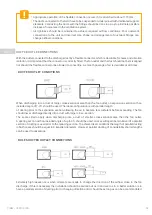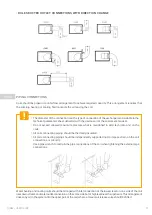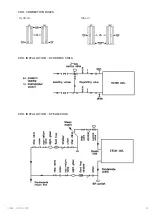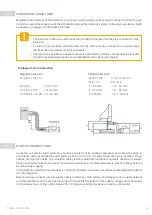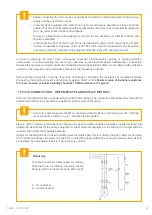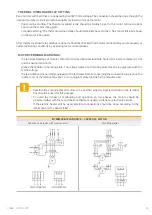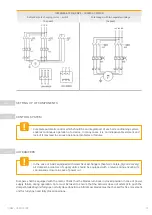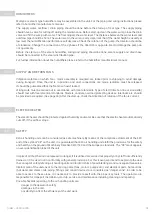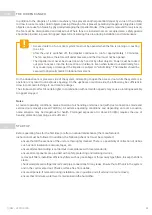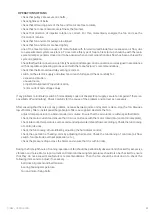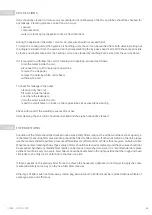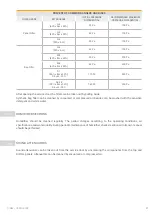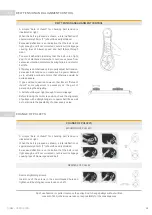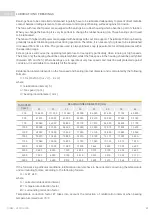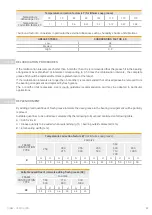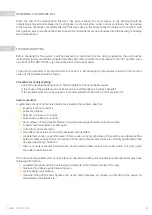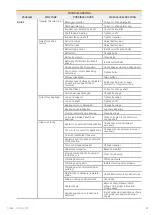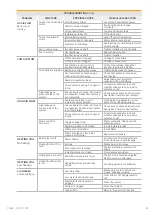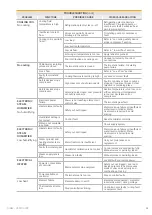
23
OIMM – VENTUS PRO
•
check that pulleys are secure on shafts,
•
check tightness of belts,
•
check that all moving parts of the fan and motor are free to rotate,
•
check that no loose materials are left near the fan inlet,
•
check that direction of impeller rotation is correct. For this, momentarily energize the fan and see the
direction of rotation,
•
check that fan and motor pulleys are aligned,
•
check that fan and motor are fixed tightly,
•
one of the most common causes of motor failure with forward curved blade fans is excessive air flow, due
to overestimated system resistance. To overcome this type of failure, first start-up should be with the main
system damper partially closed and to be opened when correct proportional air flow has been achieved by
system regulation,
•
check that flexible connections are firmly fixed and undamaged, duct connections are designed in accordance
with acceptable engineering practices and with the manufacturer’ s recommendations,
•
check that thermal overload relay setting is correct,
•
switch on the electric supply and allow fan to reach full speed. Check carefully for:
-
excessive vibration,
-
unusual noise,
-
proper belt alignment Proper lubrication,
-
motor current and voltage values.
If any problem is indicated, switch of immediately. Lock out the electrical supply, secure fan impeller if there is a
possibility of “windmilling”. Check carefully for the cause of the problem and correct as necessary.
After ensuring that there is not any problem, no leaks between joints and system is clean, stop the fan. Dispose
low efficiency filters; install panel/bag/absolute filters as supplied. Restarts the fan:
•
adjust damper position to obtain required air volume. Ensure that the air volume is within specified limits,
•
check the motor current and ensure that it is in accordance with the motor rated data (on motor nameplate),
•
check inlet-outlet temperatures across coils and adjust water/steam flows accordingly. Check the functioning
of control devices,
•
check the functioning of humidifier by adjusting the humidistat control,
•
check the operation of heating coils by adjusting thermostat. Check the functioning of controls. (air flow
switch, fan interlock, overheat protection, etc.),
•
check the pressure drop across the filters and ensure that it is within limits.
During the first eight hours of running, operation of fan should be periodically observed and checked for excessive
vibration and noise. Motor input current and motor and bearing temperatures should also be checked to ensure
that they do not exceed manufacturer’s recommendations. Then the fan should be shut down to check the
following items and to adjust, if necessary:
•
belt drive alignment and belt tension,
•
bearing housing temperature,
•
fan and motor fixing bolts.
»
OPERATIONS OF FANS


